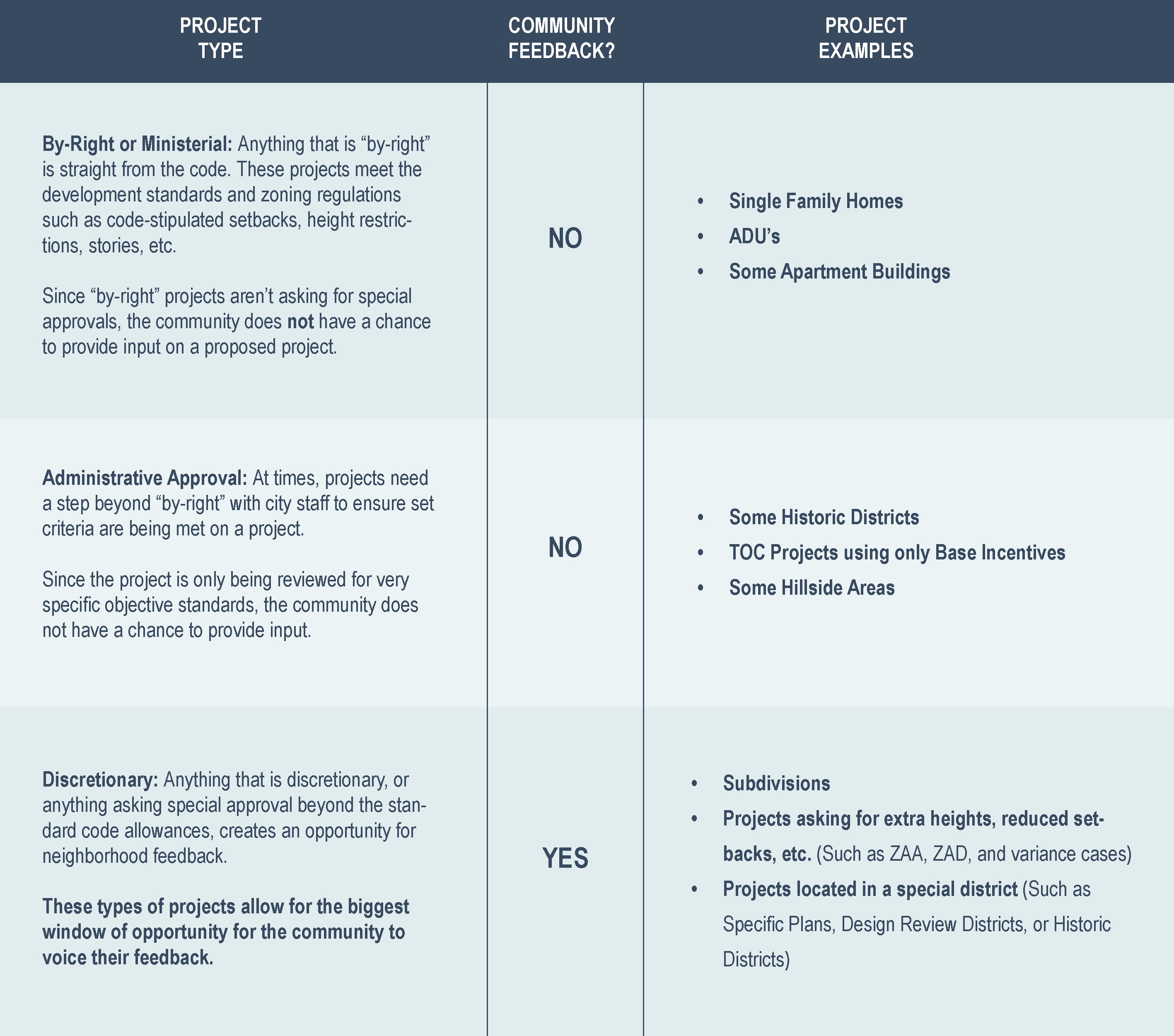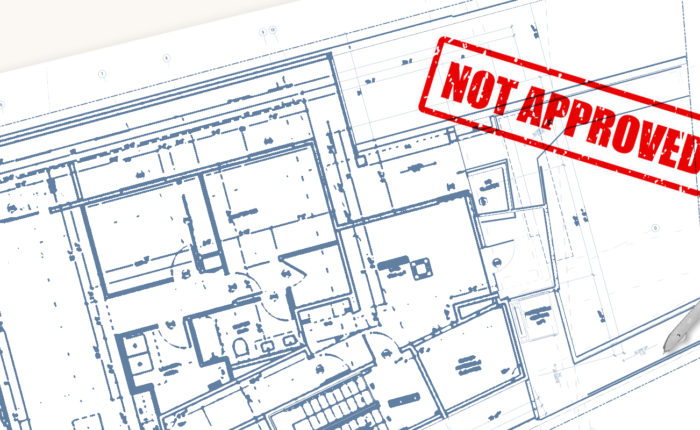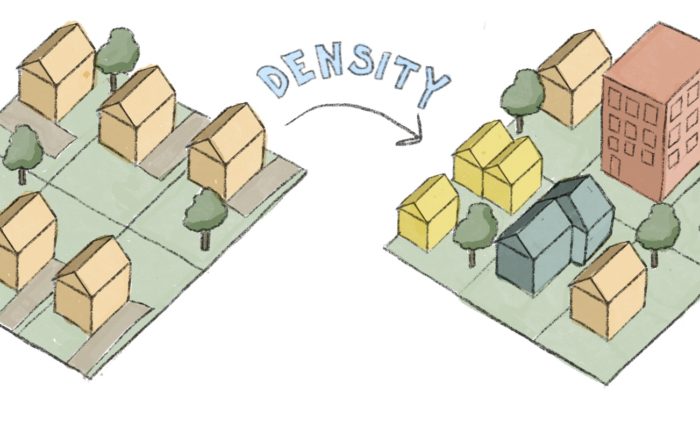Apartments, ADUs and Small Lots—oh my! As a response to the state’s push to meet current housing needs, new developments are popping up across Los Angeles at an increasing rate (Reminder: Los Angeles is currently short 456,643 housing units). Many residents would like to prevent new housing developments for a few fear-based reasons—loss of neighborhood character, increased traffic, decreased property values, etc. However, very rarely can a project be stopped, so it’s important to find a way to work together to create a mutually beneficial solution to help ease these fears.
In response to residents’ growing concerns, we thought it would be helpful to share practical ways that residents can improve nearby projects without further hindering the housing shortage. We’ll review what types of projects allow neighbor input, when is the best time to speak up, and how best to go about voicing concerns to get reasonable results that meet everyone’s goals.
P.S. Developers and architects live and work in the same city as you. We too value our privacy, views, parking, and quiet space, but with the sky high cost of living in Los Angeles, it’s impossible to not recognize the low supply of housing and its effects on affordability. So, how can residents work with developers/architects more efficiently to create housing that communities are proud of? Let’s dive into it!
1) Only certain project types allow for neighborhood input.
There are three main types of projects in Los Angeles:

2) When is the right time to speak up?
Option 1: Neighborhood Council Meetings
Attend the local neighborhood council and their planning/land use meetings. Not all housing developments are required to be presented at local neighborhood council meetings, but most are greatly encouraged to do so. This is an excellent informal opportunity to hear from the designers and find out “why” they made some of the design decisions they did, as well as request they look into alternate solutions.
How do I find out about these meetings?
– Sign up for your local neighborhood council mailing lists
– Keep an eye out for posted agendas/dates
– Attend a meeting and note future dates
– Some neighborhood councils will ALSO send postcards to nearby residents if a proposed project is being reviewed at a future meeting
Option 2: City Hearings
All projects requesting something beyond what is allowed by code are required to go through a public hearing with a Zoning Administrator and/or Design Review Boards as required by LAMC.
How do I find out about these meetings?
– The project site will have a large poster with this hearing information
– Neighbors adjacent to a discretionary project will get a notification via mail of any hearings for a particular project. Depending on the request, who is notified will vary based on the LAMC requirements. Notifications can range from directly adjacent owners (for minor requests) up to 500 feet (for larger projects/requests).
Option 3: Contact the Architect/Project Team directly
The most cost-effective way to request reasonable changes to a project is to work directly with the owner and design team during the design/city approval phase. Many project teams will happily entertain feedback early on if it means avoiding a lengthy and expensive appeal process through the city.
PRO TIP: Tearing down the site posters with hearing information may seem tempting, but what it does is limit the ability for your neighbors to find out about the hearing (and limits their ability to speak up about a project). This move is ONLY beneficial to the design team, as it means fewer people will speak up about the project.
3) What are some ways that I can influence a project?
Contrary to popular belief: “JUST SAY NO” is a terrible option 99.9% of the time. When the city reviews feedback on a project, anything with unreasonable expectations will be dismissed. So why not channel your efforts in a way to make actual, beneficial change to a project that benefits everyone? Here are some ways to adjust feedback to get a productive response from the design team:
Instead of….
“The project is ugly”
Try: Is there a way to add more material, color, or building articulation/steps in the facade to make the project more visually interesting?
“The project is obtrusive”
Try: Can the balconies/decks be adjusted so occupants aren’t looking directly into my backyard? Can some landscape or hedges be added for extra privacy?
“The building is too tall and boxy”
Try: Is there a way to set back the upper floors so it doesn’t appear so large?
“Too many cars”
Try: Could you look into adding some guest parking on-site so it doesn’t impact the street availability?
“Can you get rid of the windows facing the lot?”
Try: Can the window locations be resized or reoriented to protect neighbor privacy?
“The project will get rid of all the mature trees”
Try: Is there a way to adjust the buildings so that some mature vegetation is retained? Can new landscaping be provided as a buffer?
Conclusion
If you’ve made it through the many housing blogs over the last few months, THANK YOU! As much as we’ve loved researching and sharing about the housing dilemmas affecting Los Angeles, it’s about time we wrapped up this series. If you have a question or new topic you’d like to hear more about, feel free to shoot us an email with any suggestions that come to mind.
And as always, if you have a new project that seems like a great fit for Tracy A. Stone Architect, you know where to find us!
Be sure to check out some of our previous blogs on housing in Los Angeles:
- Why is Housing in Los Angeles So Expensive? (Part 1)
- Why is Housing in Los Angeles So Expensive? (Part 2)
- Housing Bills 101
- Housing Bills 102
- Reality Check: The Real Story behind Housing Bills



